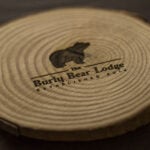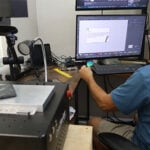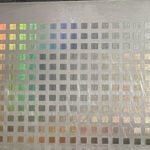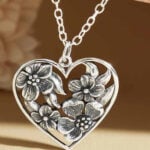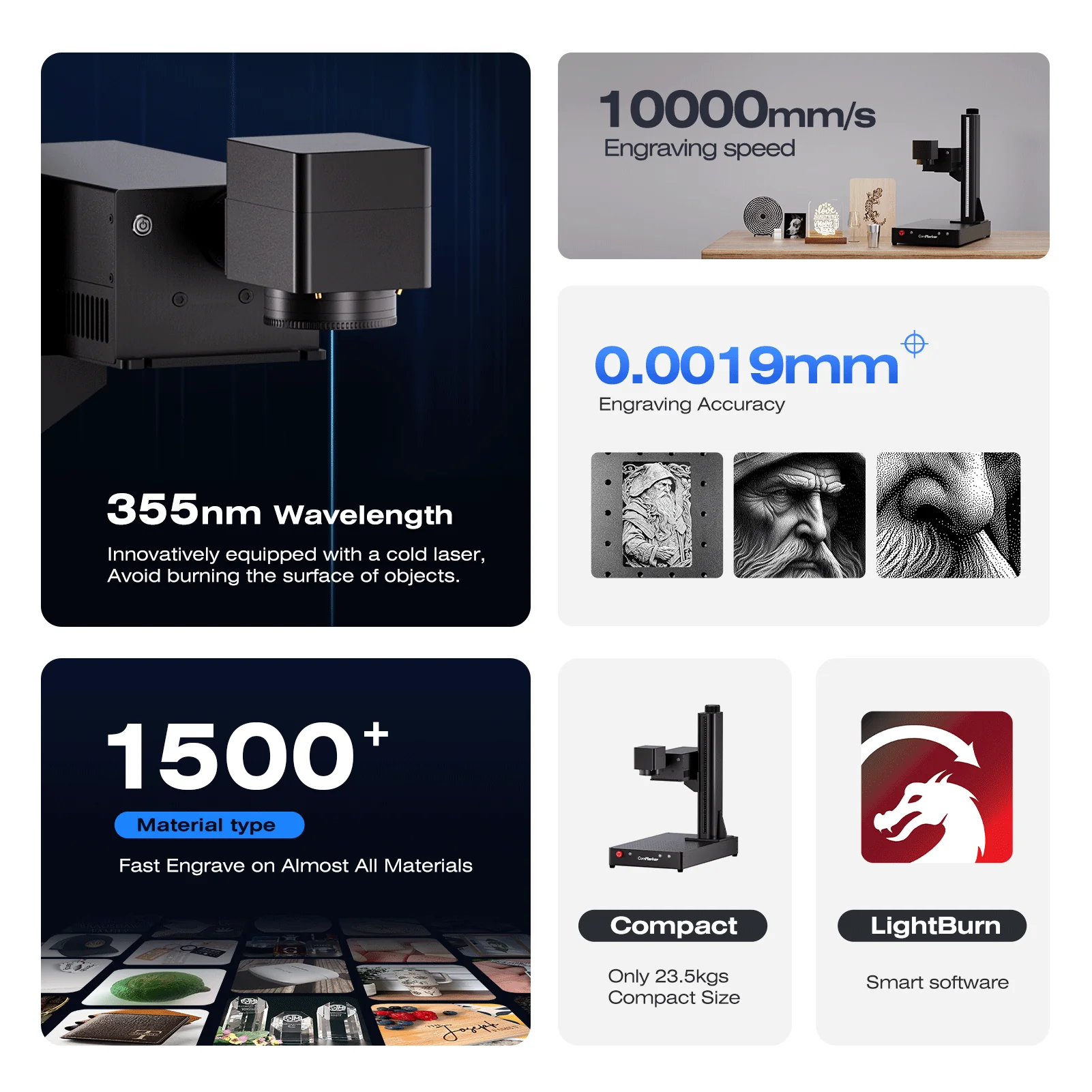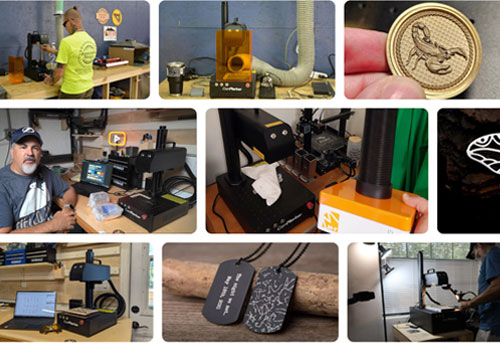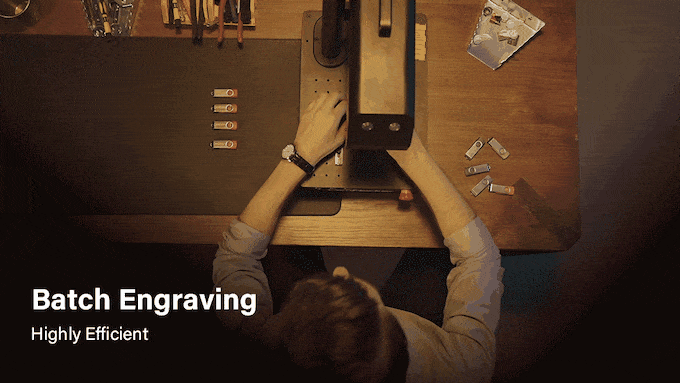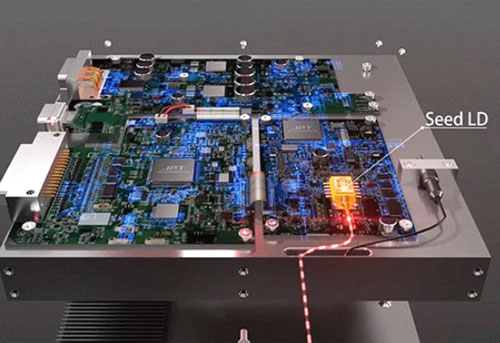The ComMarker Omni 1 UV laser engraver is a powerful 5W desktop system designed for engraving plastics, wood, metals, glass, stone, and even organic materials. But if you’ve used it in LightBurn, you’ve probably noticed something unusual: many parameters (such as power) are greyed out.
Unlike CO₂ or fiber lasers, the Omni 1 relies primarily on two key controls:
-
Frequency (kHz) – how many laser pulses per second are delivered.
-
Q-Pulse width – the duration of each pulse, controlling the energy per shot.
By mastering these two settings, you can achieve consistent, clean, and professional-quality results across a wide range of materials. This guide provides step-by-step references for 16 common materials, adapted from both real-world testing and community insights.

Why Material Settings Matter
-
Precision & Contrast: UV lasers interact differently depending on material type. Too much energy causes burning or cracks; too little leaves faint marks.
-
Productivity: Optimized frequency and Q-pulse shorten cycle time while maintaining quality.
-
Durability: Correct settings reduce wear on optics and extend your engraver’s lifespan.
-
Safety: Controlled passes and proper focus minimize fire hazards and toxic fumes.
Before You Start
-
Clean the work surface and secure material flat.
-
Focus carefully with the Omni 1’s red dot and motorized Z-axis.
-
Ventilate using the built-in exhaust fan or an external air filter.
Key Laser Parameters Explained
-
Speed (mm/s): Head movement speed. Higher speeds reduce heat marks but may lighten engraving.
-
Frequency (kHz): Pulse repetition rate. Higher frequency = smoother edges, especially on plastics/metals.
-
Q-Pulse width: Pulse duration. Longer pulses = more energy per shot, ideal for metal or leather.
-
Passes: Multiple light passes usually give better results than a single heavy one.
-
Line Interval (mm): Raster spacing. Tight intervals (0.03 mm) give sharper resolution.
-
Image Mode (LightBurn only): Enables dithering for grayscale or 2.5D effects.
Recommended Settings by Material
(Machine: Omni 1 UV 5W · Software: LightBurn)

1. Clear Acrylic Engraving
-
Frequency: 40 kHz
-
Q-Pulse: 1
-
Speed: 1000 mm/s
-
Passes: 1
-
Line Interval: 0.03 mm
💡 Back-engrave for a frosted glass look. Mask the back with painter’s tape to prevent smoke marks.
2. Acrylic Leaf Pattern (with dithering)
-
Frequency: 40 kHz
-
Q-Pulse: 1
-
Speed: 500 mm/s
-
Line Interval: 0.03 mm
-
Image Mode: Atkinson
💡 Atkinson dithering gives smooth gradients; keep interval tight for fine leaf veins.
3. Glass Ornaments
-
Frequency: 40 kHz
-
Q-Pulse: 1
-
Speed: 200 mm/s
-
Passes: 1
-
Line Interval: 0.03 mm
💡 Use a damp paper towel or dish soap film to reduce micro-fractures.
4. Coconut Shell
-
Frequency: 30 kHz
-
Q-Pulse: 1
-
Speed: 500 mm/s
-
Passes: 1
💡 Lightly sand first; shells vary, so test on a scrap piece.
5. Leather Badges (Engrave + Cut)
-
Engraving Pass: 30 kHz / Q-Pulse 20 / 1000 mm/s
-
Cutting Pass: 40 kHz / Q-Pulse 1 / 100 mm/s / 5 passes
💡 Always engrave first, then cut. Use vegetable-tanned leather for best contrast.
6. MDF 4 mm Cutting
-
Frequency: 40 kHz
-
Q-Pulse: 1
-
Speed: 75 mm/s
-
Passes: 10
💡 Use multiple passes to avoid heavy charring; vacuum debris every 2–3 passes.
7. Wood (Engraving + Cutting)
-
Engraving: 40 kHz / Q-Pulse 1 / 200 mm/s / 3 passes
-
Cutting: 30 kHz / Q-Pulse 1 / 50 mm/s / 6 passes
💡 Crosshatch fill creates textured signs; birch plywood works consistently.
8. Rice Grain Micro-Engraving
-
Frequency: 40 kHz
-
Q-Pulse: 15
-
Speed: 100 mm/s
💡 Fix grains with double-sided tape; high Q-pulse ensures visible micro text.
9. Plastic Earbud Case
-
Frequency: 40 kHz
-
Q-Pulse: 15
-
Speed: 1000 mm/s
💡 Cover with light masking tape to reduce melt lines. Fast speed prevents distortion.
10. Rotary Glass Bottle Engraving
-
Frequency: 40 kHz
-
Q-Pulse: 5
-
Speed: 600 mm/s
-
Passes: 2
💡 Secure bottle in rotary tool. Apply clear coat afterwards for durability.
11. Towel (Textile Engraving)
-
Frequency: 30 kHz
-
Q-Pulse: 17
-
Speed: 2500 mm/s
💡 Use 100% cotton; one fast pass prevents scorching.
12. Paper / Cardboard Cutting
-
Frequency: 40 kHz
-
Q-Pulse: 1
-
Speed: 100 mm/s
-
Passes: 3–5
💡 Tape both sides to avoid burn-through. Works best on 200–300 gsm stock.
13. Metal Bottle Opener
-
Frequency: 40 kHz
-
Q-Pulse: 1
-
Speed: ~830 mm/s
💡 Clean with alcohol first. Seal with clear coat for abrasion resistance.
14. PU Leather Shoes
-
Frequency: 30 kHz
-
Q-Pulse: 20
-
Speed: 1000 mm/s
💡 Test on a hidden seam first; higher Q-pulse increases contrast.
15. Slate Coasters
-
Frequency: 40 kHz
-
Q-Pulse: 1
-
Speed: 1000 mm/s
💡 One clean pass produces bright contrast without surface flaking.
Final Tips
-
Always test on scrap material first.
-
Adjust frequency and Q-pulse in small steps—they have the biggest impact on results.
-
Keep optics clean and check focus regularly.
The Omni 1 UV laser engraver might feel limited in LightBurn, but by mastering just two controls—frequency and Q-pulse—you unlock its full engraving potential. With the right settings, you can produce crisp holiday ornaments, fine text on metals, or detailed organic patterns with professional consistency.














